Brit Fuglevaag and Jorunn Hancke Øgstad
Press release
Emerging onto the Norwegian art scene in the 1960s with an unconventional weaving practice in refinement since the age of 19, Brit Fuglevaag is an important figure in the history and development of conceptual discourses that led to the re-positioning of textile arts in Norway.
Fuglevaag moved to Oslo in 1959 to attend the National College of Art and Craft , decamping to Poland four years later to attend the Academy of Fine Arts in Warsaw.
On her return to Oslo she brought with her a fresh and unconventional attitude and approaches towards the construction and appreciation of textiles in that she experimented widely with atypical materials and held the medium and act of weaving in high esteem, on par in terms of intrinsic value and creative possibilites with contemporary painting and sculpture. This expanded viewpoint from commonly held viewpoints in Norway at the time, where weaving took a back seat to other mediums, was largely influenced by her studies in Poland, where it was held in wider regard, and later, France.
Through teaching [1 ], political advocacy on behalf of textile artists through various organizations and her own practice, she pushed back against the notion and then present-day criticisms in Norway separating art from craft, and challenged this divide. She proposed tirelessly from show to show that woven works should be viewed and evaluated in the context of contemporary art. inspiring a much needed exchange of views in the field.
Her exhibition at VI, VII draws together pieces from three bodies of work, two of which center on the reuse of discarded materials. Four works (Hiver I-IV) produced over a ten year period from 2000-2010 upcycles plastic that the artist collected from the streets of Paris, when she lived there. The plastic, thrown out by French high fashion houses, was used as a material separator between fabrics.
Born in Kirkenes, Northern Norway and raised in Trondheim the artist maintains strong ties to nature and the coastline, which figure heavily in an ongoing series of works made ropes, seaweeds, sections of fishing nets and plastics that wash ashore, three of which are included in the show.
One of her latest works, for example (Fra Varangerfjorden XXVI, 2024) features sisal and nylon ropes over a woven cotton and wool backing.
The environmental cleanup represented by these pieces shows the potential for the act of weaving to take on a political dimension, while transforming how the medium is viewed.
Between these works is a painting by Oslo based artist, Jorunn Hancke Øgstad, Night Shapes (2024). Here, Øgstad’s work, which since 2019 has featured subtle and trace elements of plastics, epoxy and resins over fabric dye is in dialogue not only with these largely plastic works, but with two tapestries (Det hvite fjellet, 2020 and Veien til Triora, 2015) that Fuglevaag has woven from wool and metal thread. In these pieces, both artists experiment with materials and work abstractly, with repeating elements.
Throughout the years Fuglevaag has been markedly influenced by living in multiple places and through the collection of specific materials that this has made possible. Veien til Triora (2015) for example is inspired by the view on a road towards a village in Ligura, amd many of Fuglevaag’s pieces nod to a travel filled life, one in which she continues to draw inspiration from the many places that she has lived for longer periods including Italy and France, as well as a summer house east of Vadsø along the Varangerfjord in Finnmark.
- Artist Biographies -
Brit Fuglevaag lives and works in Oslo. She has exhibited widely over six decades. In 2000 was awarded the Mérite et dévouement Français for her artistic work in France. In 2023 she was Knighted (1st class) by His Majesty the King into The Royal Norwegian Order of Saint Olav for her contributions as an artist.
Her works are in the collections of Norway’s National Museum; KODE, Bergen; Oslo Kommune; KORO; AKO Art Foundation; Liljevalchs Konsthall, Stockholm; Nordenfjeldske Kunstindustrimuseum, Trondheim; North Norway Art Museum, Tromsø; the Arts Council Norway, the Norwegian Parliament, and the Sandvig Collections/Maihaugen in Lillehammer, and AKO Foundation based in London.
Jorunn Hancke Øgstad is a Norwegian artist exploring the language of abstraction through painting and sculpture. Using fabric dye, resin and plastics on unprimed canvas, the artist mimics watercolor, spray paint and print processes, often within the same work, co-opting techniques commonly found in expressionist, street and pop art practices.
Traversing historical periods in art and design, Øgstad finds inspiration everywhere from 19th century spiritual abstraction to the work of female contemporaries. Many of her works feature bleaching and blocking processes which see areas of the works become translucent, thereby letting light through the surface of the work.
Born in 1979 in Bærum, Norway, Øgstad lives and works in Oslo. Notable solo exhibitions include Downpour, Sandefjord Kunstforening; Triangel, Haugar Art Museum, Tønsberg, Norway; Nye Malerier (New Paintings), Formuesforvaltning, Oslo; a 2019 presentation at Frieze London in Regents Park and ‘Crocodile Tears’ at the Kunsthall Oslo, part of Munch on the Move, a series of exhibitions initiated by Norway’s Munch Museum.
Notable group exhibitions include Oppgjørets time (The Reckoning of Time), Henie Onstad Kunstsenter, Høvikkoden, Norway; Kunst bak Glasset, a collection exhibition at Henie Onstad Kunstsenter, Høvikkoden, Norway; …And Justice for All at VI, VII, Oslo. The artist’s works are in numerous private collections as well as the collections of Moderna Museum, Stockholm; The City of Oslo Art Collection; Örebro Konsthall; Equinor Art Collection and the collections of KORO, Henie Onstad Art Center and Norway’s National Museum.
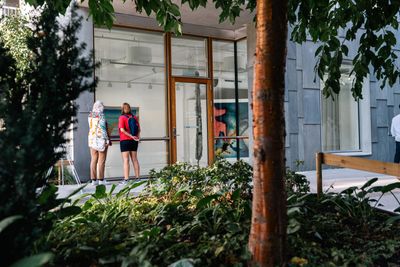
Brit Fuglevaag with work by Jorunn Hancke Øgstad
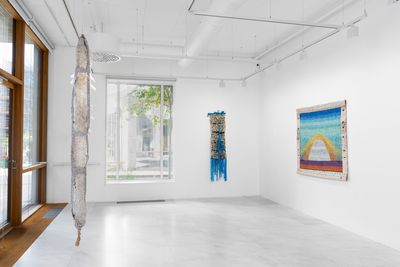
Brit Fuglevaag, Le Monde, 2010
Nylon and newspaper
180 × 45 cm (70 ⅞ × 17 ¾ inches)
Nylon and newspaper
180 × 45 cm (70 ⅞ × 17 ¾ inches)
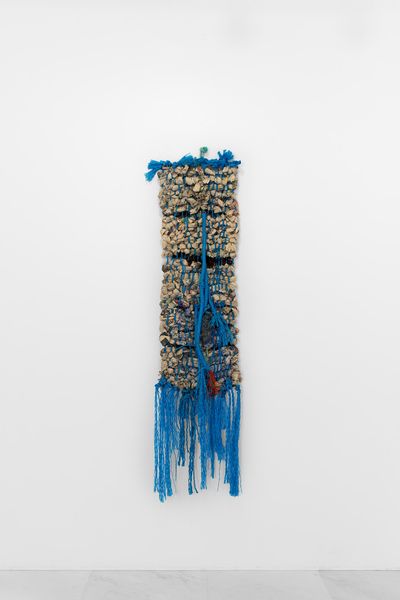

Brit Fuglevaag with work by Jorunn Hancke Øgstad
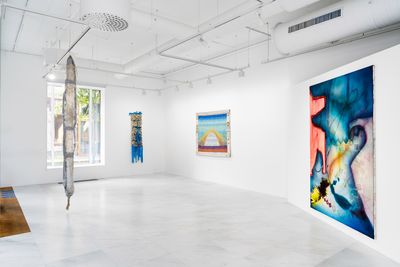
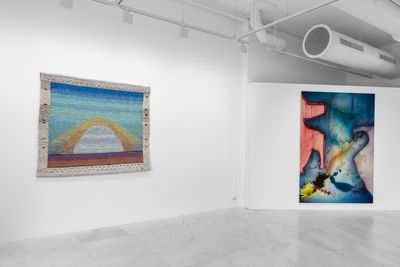
Brit Fuglevaag, Det hvite fjellet (The White Mountain), 2020
Wool, metallic thread and wood
131 × 152 cm (51 ⅝ × 59 ⅞ inches)
Wool, metallic thread and wood
131 × 152 cm (51 ⅝ × 59 ⅞ inches)
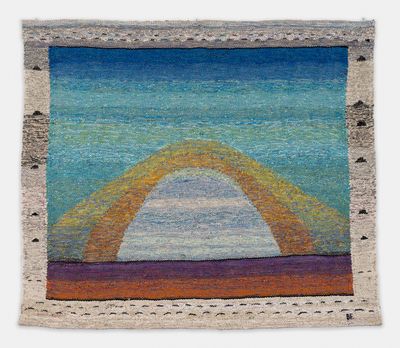

Brit Fuglevaag with work by Jorunn Hancke Øgstad
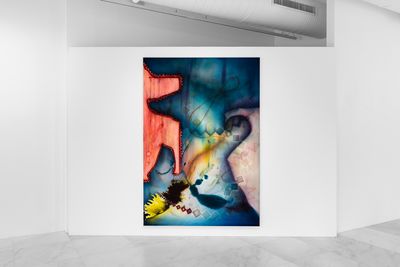
Jorunn Hancke Øgstad, Night Shapes, 2024
Textile dye, acrylic and resin on canvas
210 × 145 × 2.5 cm (82 ⅝ × 57 ⅛ × 1 inches)
Textile dye, acrylic and resin on canvas
210 × 145 × 2.5 cm (82 ⅝ × 57 ⅛ × 1 inches)
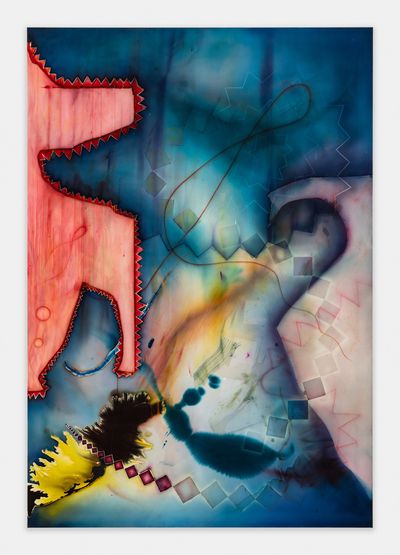

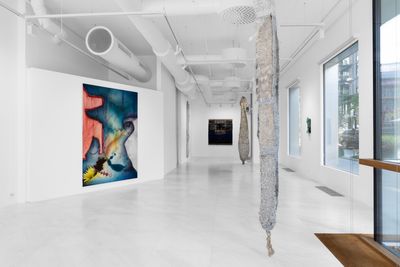
Brit Fuglevaag with work by Jorunn Hancke Øgstad
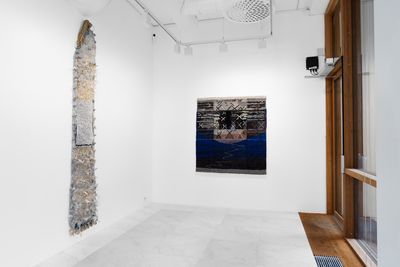
Brit Fuglevaag, Veien til Triora (The Road to Triora), 2015
Wool, linen and wood
142 × 132 cm (55 ⅞ × 52 inches)
Wool, linen and wood
142 × 132 cm (55 ⅞ × 52 inches)



Brit Fuglevaag, Fra Varangerfjorden XXVI, 2024
Cotton, wool, nylon rope and sisal
42 × 24 × 5 cm (16 ½ × 9 ½ × 2 inches)
Cotton, wool, nylon rope and sisal
42 × 24 × 5 cm (16 ½ × 9 ½ × 2 inches)
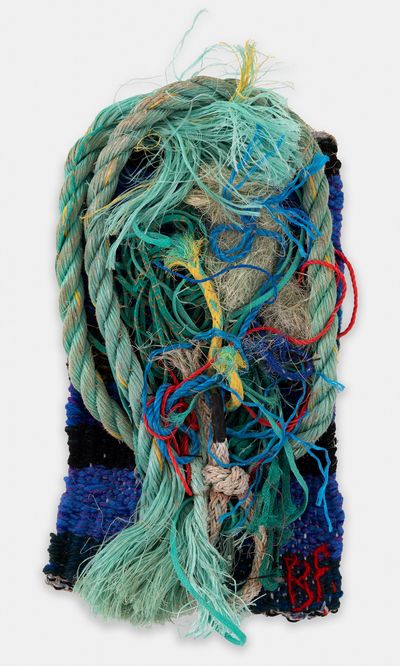


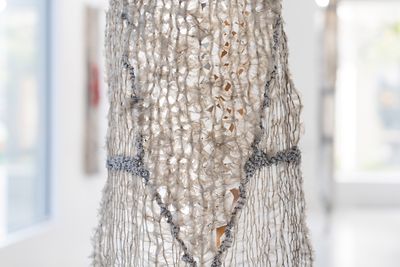
Brit Fuglevaag, Hiver I, 2000
Plastic, linen and cotton
220 × 50 × 18 cm (86 ⅝ × 19 ⅝ × 7 ⅛ inches)
Plastic, linen and cotton
220 × 50 × 18 cm (86 ⅝ × 19 ⅝ × 7 ⅛ inches)
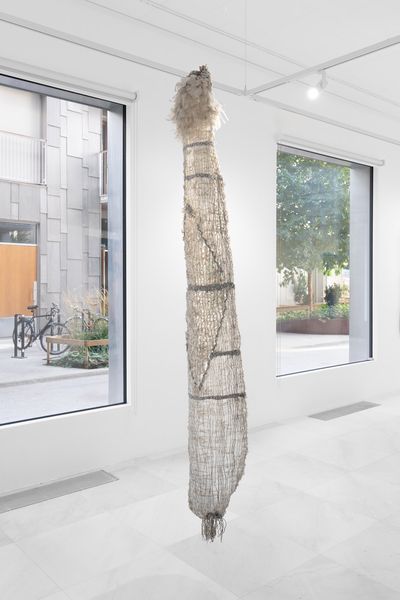

Brit Fuglevaag, Hiver I, 2000
Plastic, linen and cotton
220 × 50 × 18 cm (86 ⅝ × 19 ⅝ × 7 ⅛ inches) (86 ⅝ × 19 ⅝ × 7 ⅛ inches)
Plastic, linen and cotton
220 × 50 × 18 cm (86 ⅝ × 19 ⅝ × 7 ⅛ inches) (86 ⅝ × 19 ⅝ × 7 ⅛ inches)


Brit Fuglevaag, Hiver IV, 2010
Plastic, linen and nylon rope
150 × 48 cm (59 × 18 ⅞ inches)
Plastic, linen and nylon rope
150 × 48 cm (59 × 18 ⅞ inches)
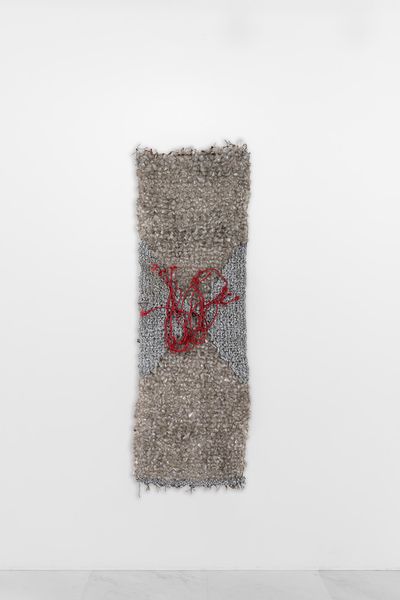

Brit Fuglevaag, Hiver II, 2005
Plastic, linen and cotton
276 × 20 × 22 cm (108 ⅝ × 7 ⅞ × 8 ⅝ inches)
Plastic, linen and cotton
276 × 20 × 22 cm (108 ⅝ × 7 ⅞ × 8 ⅝ inches)

